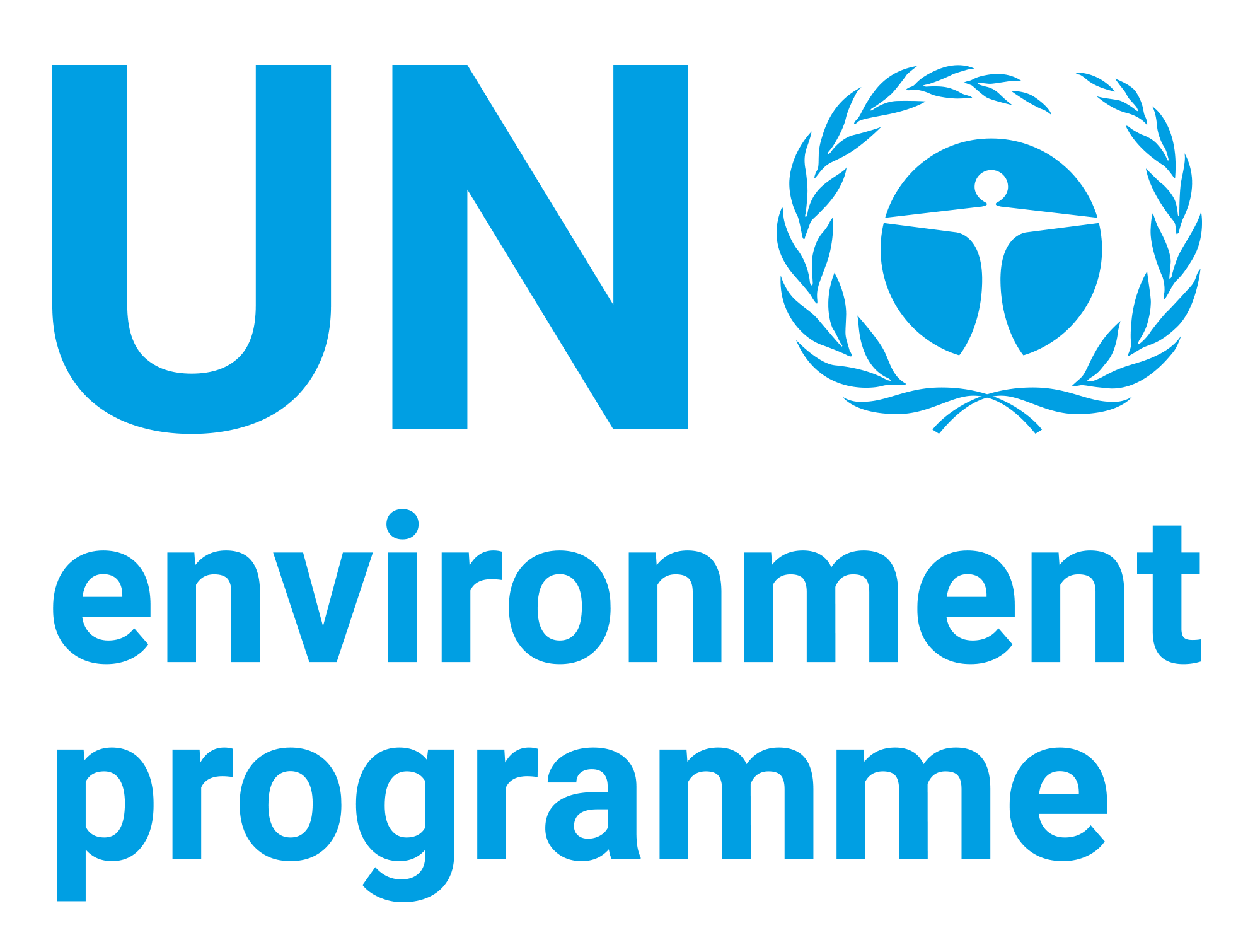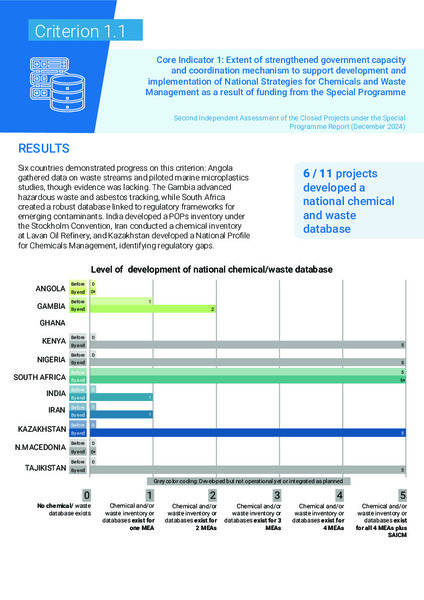| dc.contributor | Industry and Economy Division | en_US |
| dc.contributor.author | United Nations Environment Programme | en_US |
| dc.coverage.spatial | Global | en_US |
| dc.date.accessioned | 2025-04-24T20:05:55Z | |
| dc.date.available | 2025-04-24T20:05:55Z | |
| dc.date.issued | 2024-12 | |
| dc.date.submitted | 2025-04-23 | |
| dc.identifier.uri | https://wedocs.unep.org/20.500.11822/47428 | |
| dc.description | Six countries demonstrated progress on this criterion: Angola gathered data on waste streams and piloted marine microplastics studies, though evidence was lacking. The Gambia advanced hazardous waste and asbestos tracking, while South Africa created a robust database linked to regulatory frameworks for emerging contaminants. India developed a POPs inventory under the Stockholm Convention, Iran conducted a chemical inventory at Lavan Oil Refinery, and Kazakhstan developed a National Profile for Chemicals Management, identifying regulatory gaps. | en_US |
| dc.format | pdf | en_US |
| dc.language | English | en_US |
| dc.subject | chemical | en_US |
| dc.subject | waste management | en_US |
| dc.title | Criterion 1.1 - Core Indicator 1: Extent of strengthened government capacity and coordination mechanism to support development and implementation of National Strategies for Chemicals and Waste Management as a result of funding from the Special Programme - Second Independent Assessment of the Closed Projects under the Special Programme Report (December 2024) | en_US |
| dc.type | Factsheets, Infographics and Brochures | en_US |
| wd.identifier.sdg | SDG 3 - Good Health and Well-being | en_US |
| wd.topics | Chemicals and Pollution Action | en_US |
| wd.identifier.pagesnumber | 8 p. | en_US |


